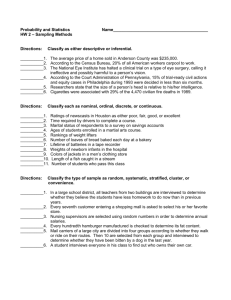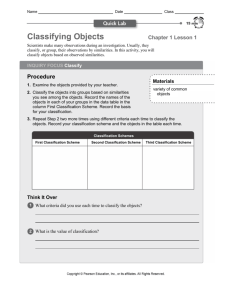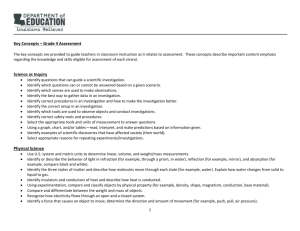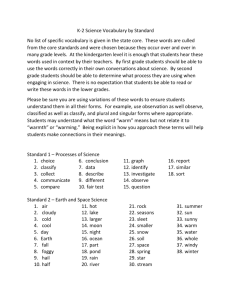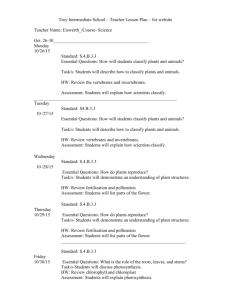Classification lesson
advertisement
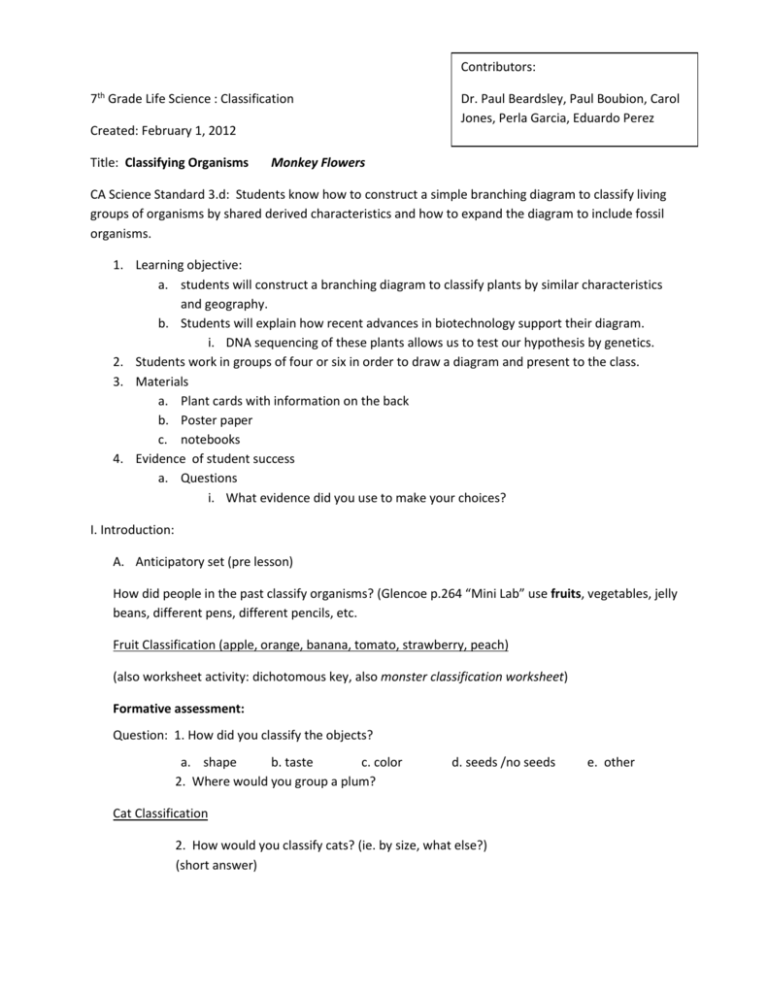
Contributors: 7th Grade Life Science : Classification Created: February 1, 2012 Title: Classifying Organisms Dr. Paul Beardsley, Paul Boubion, Carol Jones, Perla Garcia, Eduardo Perez Monkey Flowers CA Science Standard 3.d: Students know how to construct a simple branching diagram to classify living groups of organisms by shared derived characteristics and how to expand the diagram to include fossil organisms. 1. Learning objective: a. students will construct a branching diagram to classify plants by similar characteristics and geography. b. Students will explain how recent advances in biotechnology support their diagram. i. DNA sequencing of these plants allows us to test our hypothesis by genetics. 2. Students work in groups of four or six in order to draw a diagram and present to the class. 3. Materials a. Plant cards with information on the back b. Poster paper c. notebooks 4. Evidence of student success a. Questions i. What evidence did you use to make your choices? I. Introduction: A. Anticipatory set (pre lesson) How did people in the past classify organisms? (Glencoe p.264 “Mini Lab” use fruits, vegetables, jelly beans, different pens, different pencils, etc. Fruit Classification (apple, orange, banana, tomato, strawberry, peach) (also worksheet activity: dichotomous key, also monster classification worksheet) Formative assessment: Question: 1. How did you classify the objects? a. shape b. taste c. color 2. Where would you group a plum? d. seeds /no seeds Cat Classification 2. How would you classify cats? (ie. by size, what else?) (short answer) e. other Write: draw a picture of your categories and summarize in a paragraph. Explain how you used the different features in order to classify into groups? B. Family trees a. Starting with grandparents or great grandparents and place names in a genealogy b. Emphasize oldest relatives on the bottom and newest on the top. c. Write: Explain how a family tree is organized in a simple paragraph. C. Formative assessment: Question: If you had an Aunt Lucy, where would you place her in the tree? II. Lesson activity procedures D. Students receive cards GIVE ONLY FIVE (omit letter “E”) E. Read cards and identify features Differentiation a. HIGH: construct a branching tree diagram showing their hypothesis of how the plants are related. b. MED: students are given a template and add the plant species in the correct place on the diagram c. LOW: students use fewer plants (ie. 3) to classify F. Draw diagram and place flowers in order G. Each group orally explains their evidence and rationale to classmates. a. Brief class discussion H. Writing a. What evidence did you use to make your choices? b. What other evidence would you like to know in order verify your choices? c. Differentiation: i. Provide CLOZE sentences with summary statements ii. Provide CLOZE paragraph summaries 1. Teacher provides a template for writing with key facts missing 2. Students fill in missing facts 3. Use to teach paragraph writing / summaries I. Formative Assessment: give students the sixth plant card and ask them to place add it in their tree. J. Conclusion a. Teacher presents the accepted classification of the plants based on DNA analysis i. Each plant’s genome has been sequenced and compared in order to bolster the present accepted order (the answer) b. Write: explain how close your diagram was to DNA comparisons. K. Independent Practice: page 264 “practice skill” – plant classification research a. Choose a particular plant and research how it is classified. Present results to the class in a table or chart. Include a photo or actual specimen for extra credit.

